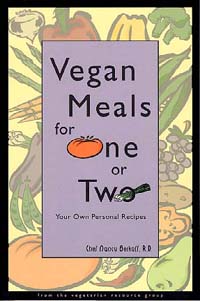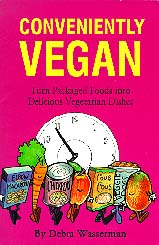Eating Around Warsaw
By Mark Laiosa
Gorbachev stated in 1989, "Hungary and Poland are doing it their way, as part of the 'Sinatra Doctrine,'" and they are. New restaurants are sprouting like mushrooms after a rainstorm. Prices are attractive and a growing awareness of vegetarianism, Polish style, makes eating in the capital of Poland an interesting challenge. Warsaw can be a "vegetarian hell," but with a sense of culinary adventure there is a surprisingly wide variety of foods to enjoy.
As in most of the world, eating is a social activity. In Poland meals usually begin with smacznego, the Polish equivalent of bon appetit. The day begins with sniadanic, an early morning breakfast, usually between 6 and 8 a.m. A typical Polish breakfast consists of bread (chleb), cheese (ser), cold cuts, pickled fish, assorted rolls, eggs in all their various forms, coffee, tea, or milk. The tea (herbata) is often served pre-sweetened in a glass, or with a tea bag and a glass of hot water with a decanter of sugar syrup on the side. Granola, muesli, or mixed seasonal fruits are also available. Black currant juice is popular and tart, with some brands sugar-sweetened.
Around 11 a.m. it's time for a second breakfast, usually a sandwich and tea or coffee. The typical Pole will eat a large meal between 3 and 7 p.m., called obiad, served in restaurants and bars (the equivalent of American cafeterias). In late evening there is yet another meal, a kolacja, either a heavy meal or a light snack. You might find yourself eating "cafeteria style," at a wide range of prices. Restaurants (restauracja) have table service and are more expensive. Warsaw has many milk bars, which originated under the communist regime, offering inexpensive meals to workers. An advantage of these restaurants is that many do not permit smoking. A disadvantage is the meat and fish dishes on the Polish language menu. Best bet is to team up with a Polish person who speaks English to guide you along, possibly one of the many students who frequent the milk bars.
The local tap water is heavily chlorinated and was difficult to drink. Bottled mineral water (woda mineralna) with or without gas is readily available. Bottle labels give you the chemical symbols and pH of the water. Toasts are often made to your health and na zdrowie is often heard. Alcohol toasts can be dodged on your part by mentioning health reasons and having (woda) water. Bread tends to be dense, due to the low gluten content of Polish wheat.
Snack stands sell a variety of salads and can be relatively easy to understand. Amerikanski salat is cole slaw, with or without mayonnaise. Each shop makes its own variety, usually dairy or egg free; be sure to ask. The Nowe Miasto, located on the New Town Square, is the first almost-vegetarian restaurant in Warsaw that is Polish vegetarian style. In addition to the vegetarian dishes there are several fish dishes. Fish and dairy products will be omitted at your request. Alcohol is served on the premises. The menu, in English and Polish, is changed every two days. The "Theater of Salads" is a distinctive group. Two of my favorites are the Ofelia, a medium-sized portion of steamed celeriac, nuts, apple, red tipped lettuce, soya sprouts, and an optional dressing of tomato puree. For the more adventurous try the Taming of the Shrew, consisting of millet, mung beans, napa cabbage, chopped red pepper, and locally grown savory mushrooms. The owner-manager Andzej Bartmonsui says the vegetables are "as close to organically grown as possible." There is apple pie and herb or fruit tea for dessert. This will cost about ten dollars for two dinners.
In the shops of Warsaw there are many surprises. Brodno, a neighborhood food shop, located near Plac Zbawiciela in Jerozolimskie, has a wide assortment of fruits and vegetables. A spicy, brine-soaked, crisp pickle from the barrel and a kilo of mixed local red and gold apple cultivars was my afternoon's snack.
In a local restaurant, even though I told the waiter-staff that I'm a vegetarian, they wanted to please me and offered pork, chicken, fish, game, or eggs, in any bizarre combination. I made it clear that I wanted food prepared without flesh or dairy. A grated beet salad with horseradish mixed with grated carrots, dressed with walnuts was brought to my table, along with a dish of steamed kasha (buckwheat) and millet, cooked with thinly sliced mushrooms and chives. Be clear in what you want and you will enjoy local vegetables and produce in all sorts of combinations with grains, legumes, and local mushrooms. Then there is always the Chicago Grill located in the Marriott (Jerozolimskie 65/79) that has a top-rated salad bar. Another restaurant to consider is the Shedrazade, an Arabic restaurant near the intersection of Gagarina and Sobieskiego. They serve good-sized portions of hummus and tabouli salad. The Mekong is a Chinese/ Vietnamese restaurant that serves meat and fish and makes its own tofu. When the tofu is used, great vegan dishes are available. Tsubane (Foksal 16) is a Japanese restaurant that serves typical, small-portioned, animal protein-free recipes. It is expensive because of the value added tax.This wide variety of eating encounters makes Warsaw a satisfying place for vegans with an adventurous palette. Smacznego!
Mark Laiosa lives in New York City.
Warning: include(1993_jan_footer.php): Failed to open stream: No such file or directory in /home4/vrg/public_html/journal/vj94jul/1994_jul_eating_warsaw.php on line 87
Warning: include(): Failed opening '1993_jan_footer.php' for inclusion (include_path='.:/opt/cpanel/ea-php82/root/usr/share/pear') in /home4/vrg/public_html/journal/vj94jul/1994_jul_eating_warsaw.php on line 87








